Back to top: Glyptics
Glyptics (2011 - by M. Kelly-Buccellati)
A small number of seal impressions were found in J6 and all of them came from secondary depositions, more than likely brought up into the later strata by later pit digging activities or brought by the brickfall, which covered in later Mittani times the area. The original seals were used to seal containers as is shown by the impressions on the reverse which contain impressions of cord, a peg, and in some cases impressions of cloth or leather. The containers were usually jars, baskets, boxes and sacks, and some door sealings. The opening of the container was first covered with either cloth or leather; this was then tied on with cord; the knot of the cord was in turn covered with mud and a cylinder seal was rolled on it. The seal design was originally carved in the negative and this is why we find the impressions in the positive. From the excavations we have the mud sealing that remained after the opening of the containers. This mud sealing was no longer important and could be discarded. That is why the impressions we find are so often incomplete.The complete description of the glyptics can be found in the page of the single object. The entire corpus of the EDIII and Akkadian Glyptics are published respectively from Laerke Recht and Marilyn Kelly-Buccellati.
Below you will find all gyptics found in Unit J6. For a complete iconographic description click on each object number.
Back to top: Glyptics
The sealings as objects
In J6 were found a 76 clay lumps, burnt clay without impressions, 16 sealings, clay with imprints of the object on which the fresh clay was placed and 8 sealings with seal impressions. Here are some examples of the sealings:
|
The impression of vegetal element of a basket or some textile is visible on i2.
|
|
 i2 i2 |
|
An elongated clay object q213.1 whose surface shows impressions of irregular stripes 1-2 cm wide and 3-10 cm long. They may be impressions of a basket. It was found in brickfall f124 dated to the Mittani period.
|
|
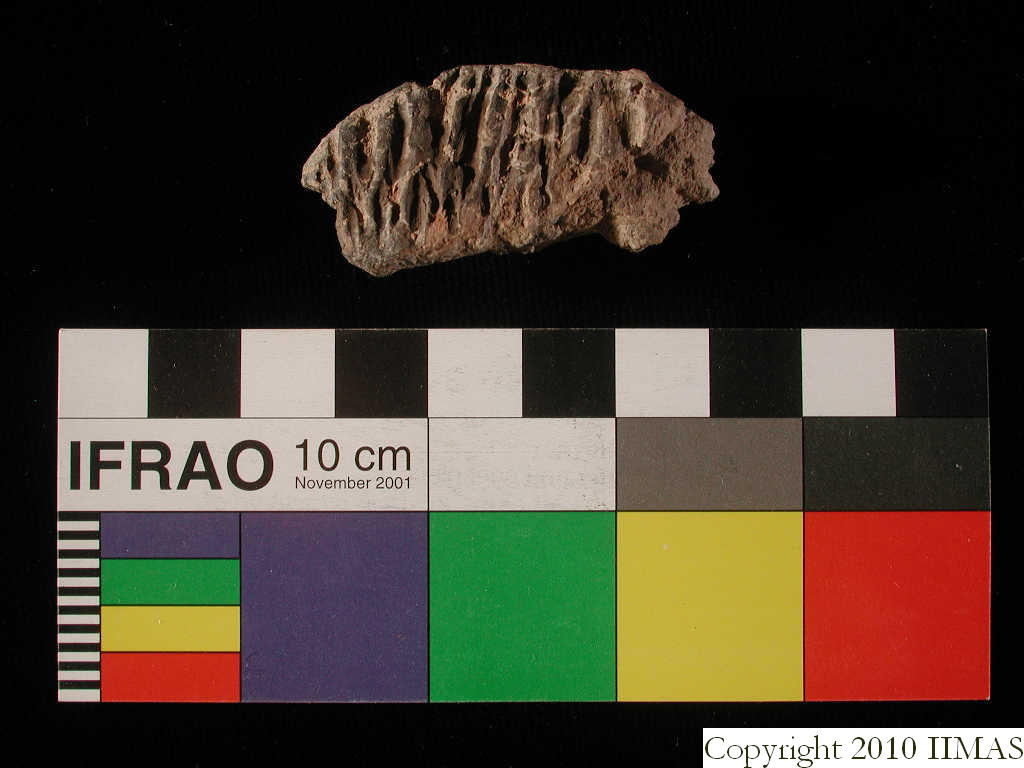 q213.1 q213.1 |
|
The clay object q39.5 presents on the upper side a seal impression (see here for the seal impression) and on the back side there are three cord or leather impressions. The sealing was found in area C2 and is without stratigraphic context.
|
|
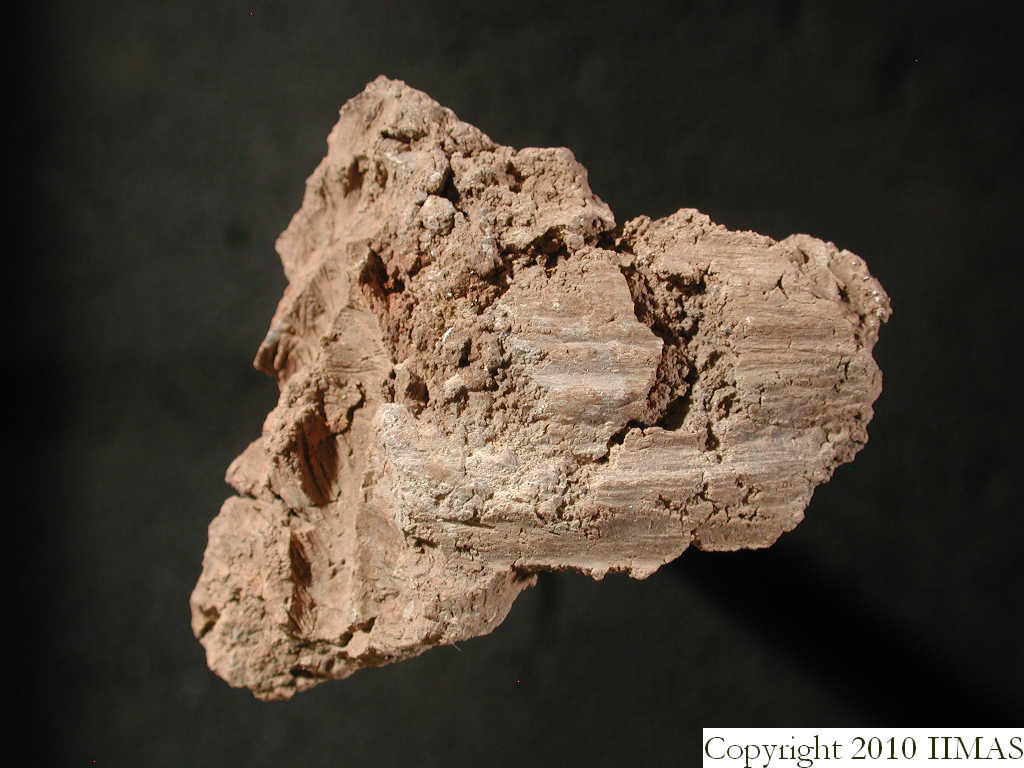 q39.5 q39.5 |
|
The impression of the lower part of the neck of a jar is visible on q192.2. The sealing comes from the brickfall f111.
|
|
q380.1 is probably a jar stopper and was found in the fill f261 of pit f199, dated to Phase 5 (Isin-Larsa).
| 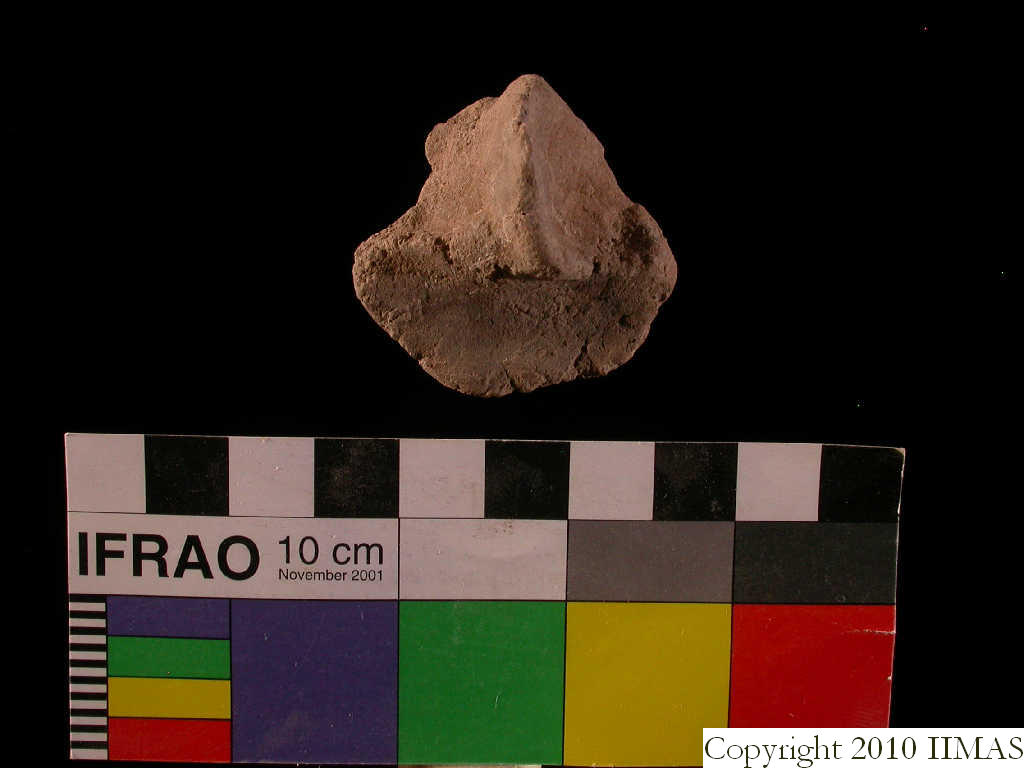 q380.1 q380.1 |
|
On q292.2 are visible impressions of the container that the clay sealed. Parallel lines 1-2 mm wide show the pattern of a basketweave. It was found in an Akkadian accumulation f174.
| 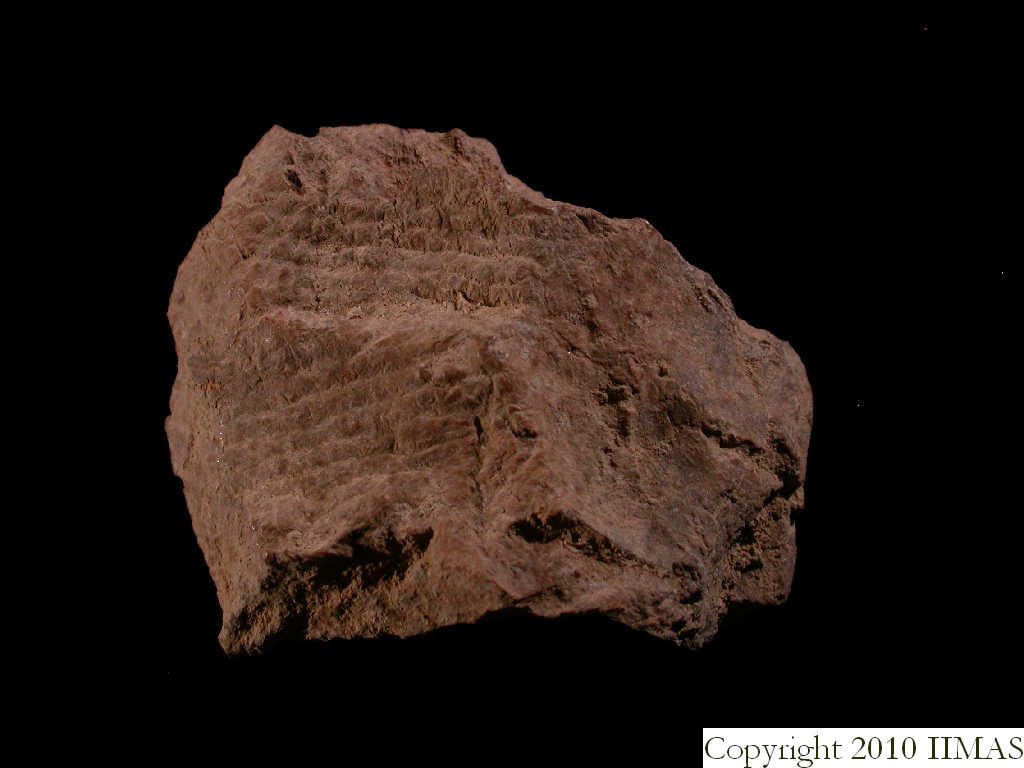 q292.2 q292.2 |
Back to top: Glyptics
Stamp Seals
|
One stamp seal q131.2 was found in unit J6 in accumulation f72, out of its primary context, and dated to the Mittani period. The seal has a conical shape and the flat base of the cone presents four concentric rings.There is a point at the centre of the rings. The pointed edge of the cone is large enough to be grasped by three fingers. This seal has similarities with a series of stamp seals found in unit J2, especially q1.2, q385.1 and q206.3. Probably used to make impressions on clothing and textiles (Bianchi-Wissing 2009, 339 |
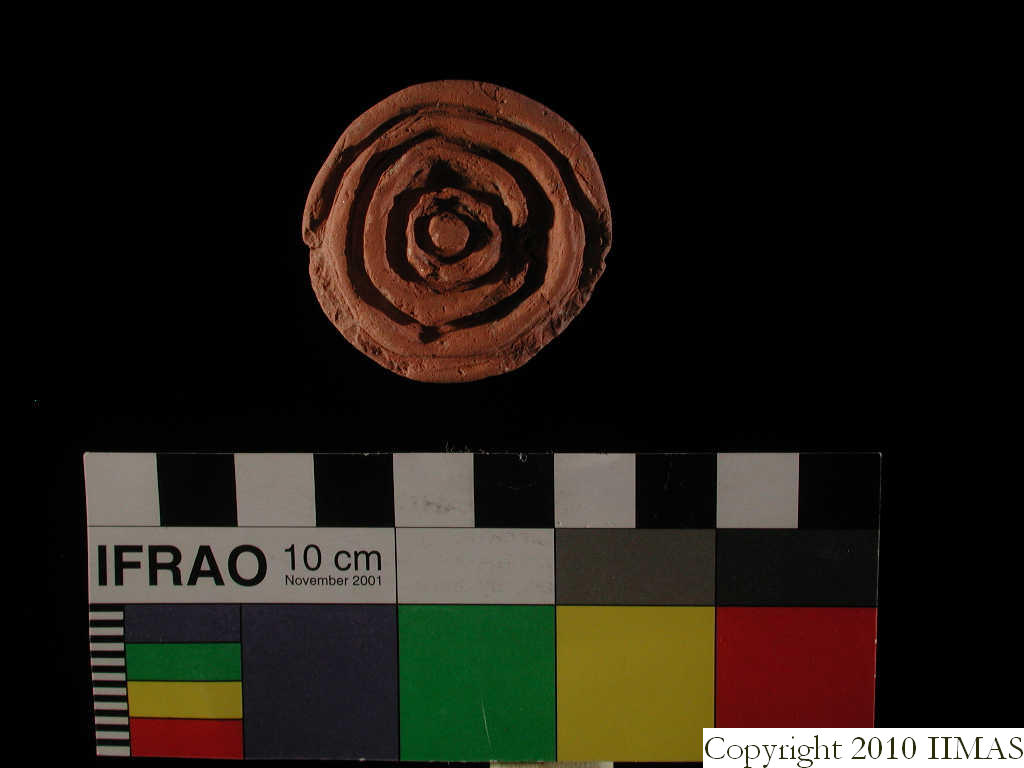 q131.2 q131.2 |
Back to top: Glyptics
Cylindrical Seals
In unit J6 were found 3 stone seals, 1 of them uncarved (i1) and two caved seals (i17, i18).
|
i1 is a cylindrically shaped object. The object is pierced in the middle of its cross section, the surface shows incrustations, but no carvings are visible. The shape is that of a cylindrical seal, but it could have been used as a bead. The seal was found in a Mittani accumulation f45.
|
|
 i1 i1 |
i17 is a complete limestone seal showing a figure seated in a boat, crossed lion and caprid. Probably dated to the EDII-EDIII period (for a detailed description and iconographical analysis and style see mKB Typology section unter i17). The seal was found unter the stone f101 a Mittanni phase of the EDIII wall f130.
|
|
 i17 i17 |
i18 is a complete black stone seal showing a presentation scene with one seated figure and another standing figure, dated for its style and typycal scene to the UR III period (see mKB Typology in i18). The seal was found in the layer f167 located under glacis f107, both features dated to Mittani.
|
|
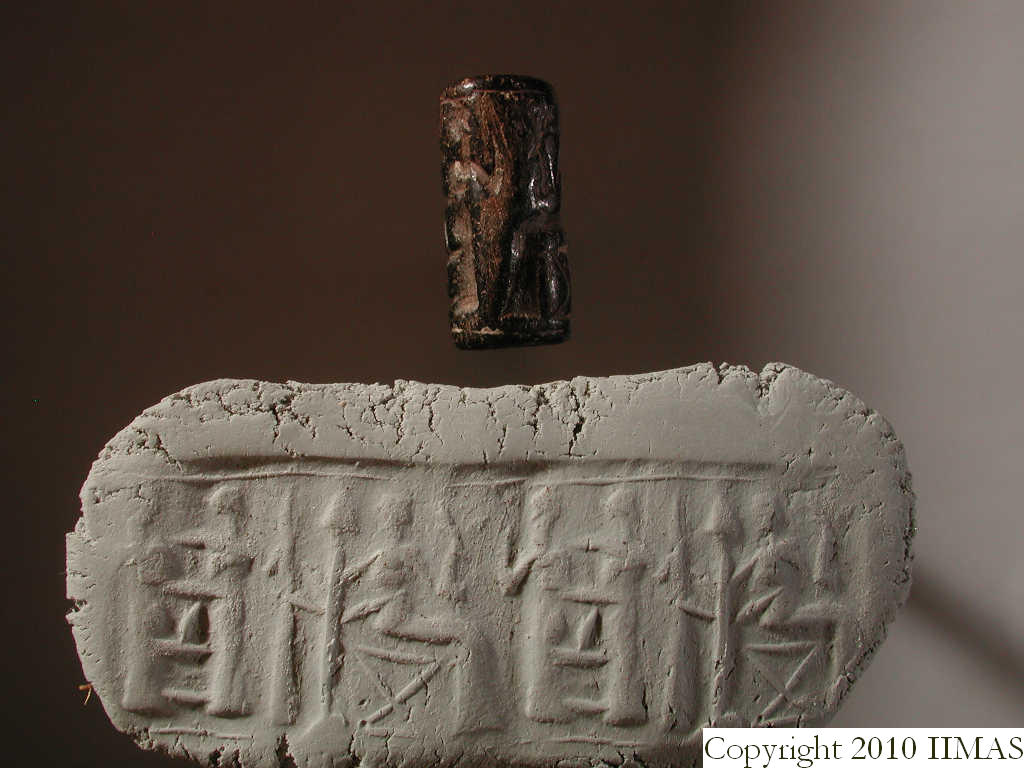 i18 i18 |
Back to top: Glyptics
Seal impressions on ceramic vessel
In Unit J6 were found two seal impressions on pottery sherds. These are: q128.2 and q318.4
|
q318.4 is a sherd of a jar with the impression of three horned animals. It was found in the EDIII dump f200.
|
|

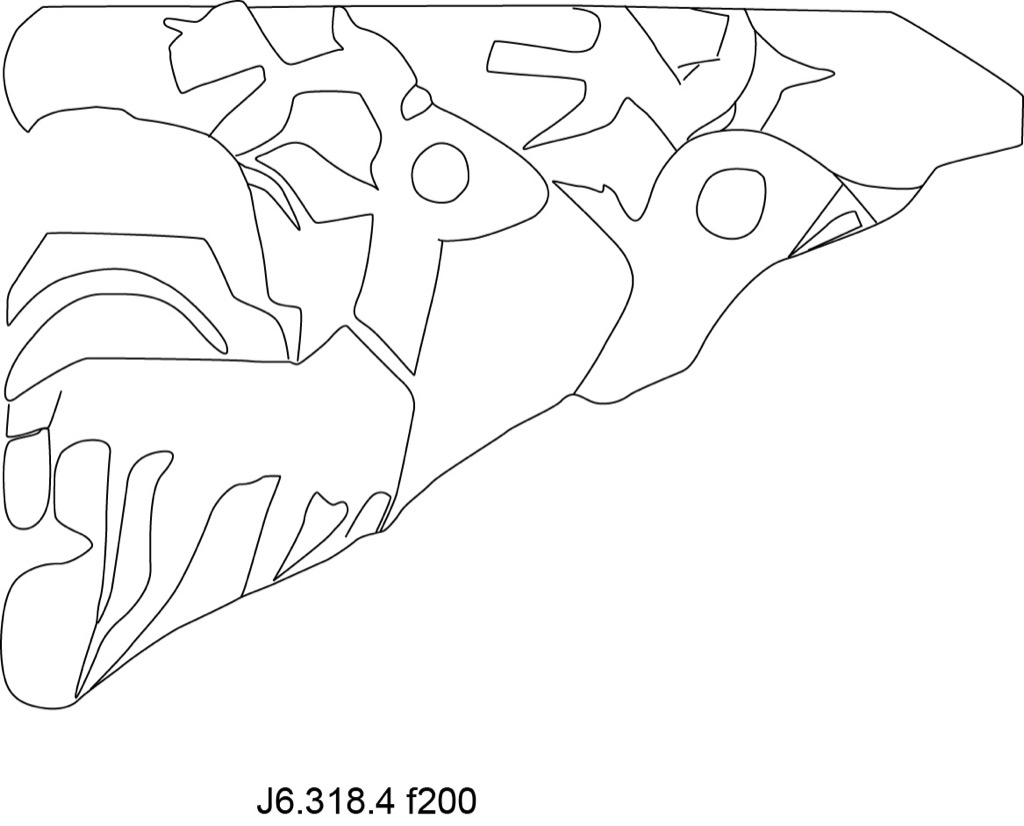 q318.4 q318.4 |
|
q128.2 is a high footed goblet where the interior bottom is decorated with a circular stamp seal impression. Inside the goblet base there are short incised lines radiating out of the central stamp, inside there is a fish while around the border are short incised lines. It was found in the upper portion of the mittani brickfall f70.
|
|
 q128.2 q128.2 |
Back to top: Glyptics
Seal impressions
We found six seal impressions in Unit J6, none of them is complete.
|
i8 was found in the brickfall f123 dated to the Mittani period. Three animals are depicted and the iconography is typical of the EDIII period.
|

 i8 i8 |
|
|
On i26 are preserved two rollings, one with a figure standing, the other with a rampant animal, typical scene of the EDIII Period. It was found in late Mittani accumulation f272.
|
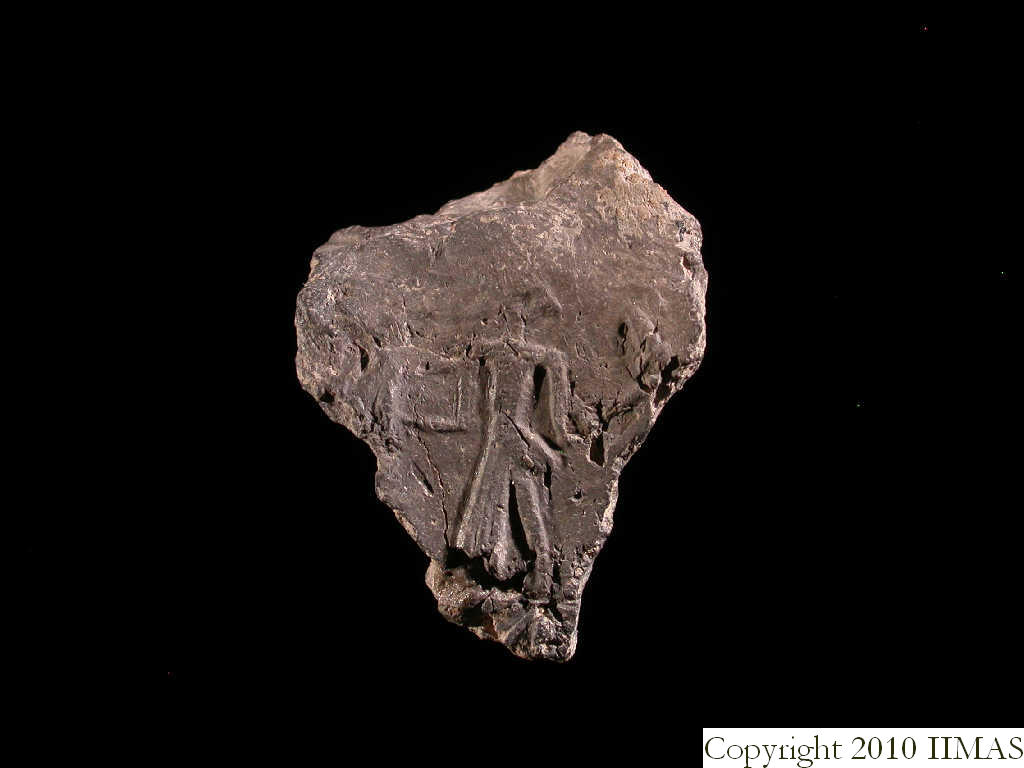 |
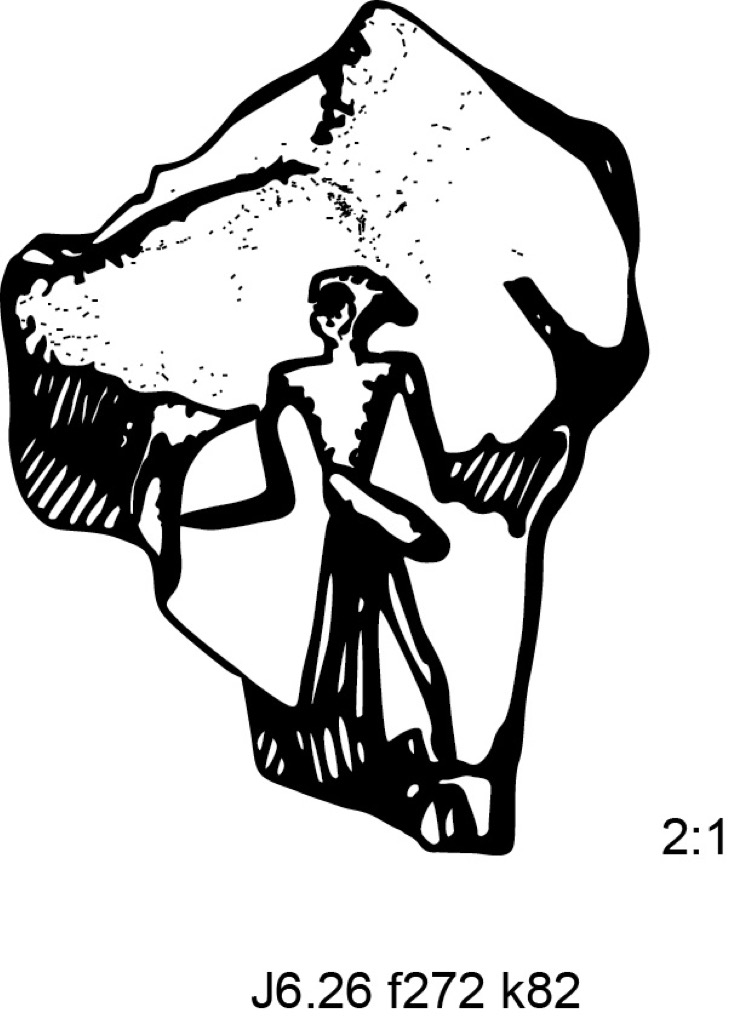 i26 i26 |
|
The seal impression on i29 is very peculiar. A wagon with two wheels and two figures sitting on it. In front of the wagon is visible the hinquarters of an animal. Below the wagon is a reclinig figure. The seal impression was found in accumulation (EDIII period) f308 at the base of staircase flank wall f129 the iconography is also EDIII.
|
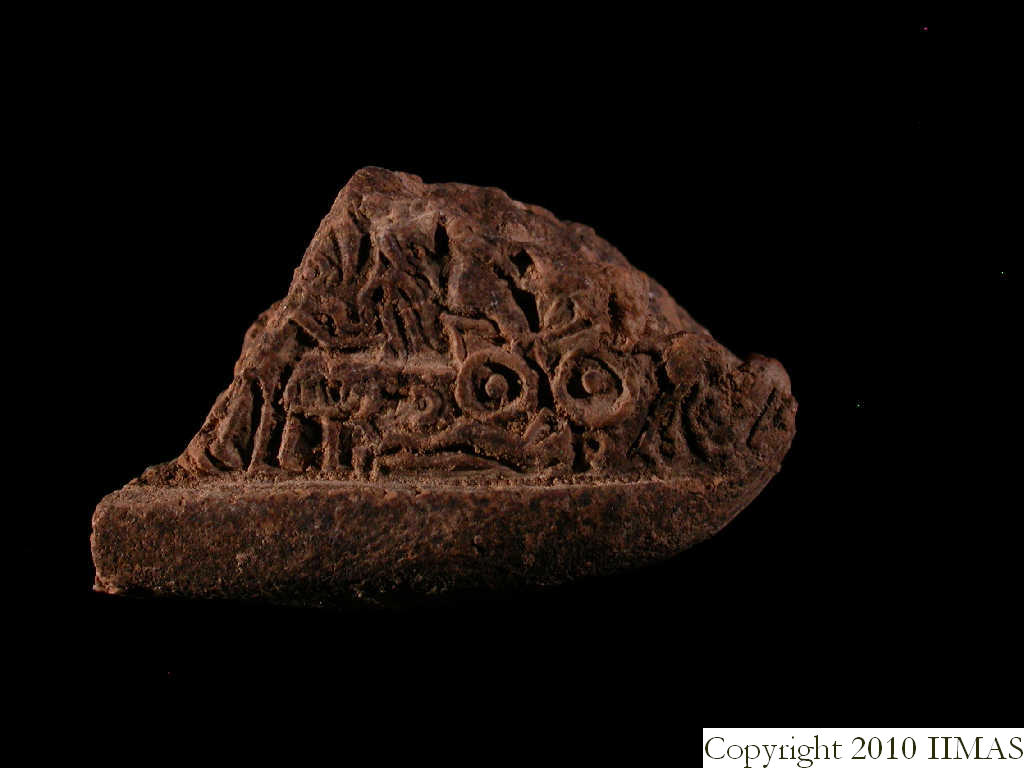 i29 i29 |
|
Very unclear figures are depicted on q34.1. The seal impression was found during the cleaning of Unit C2, so we have no context of the object.
|
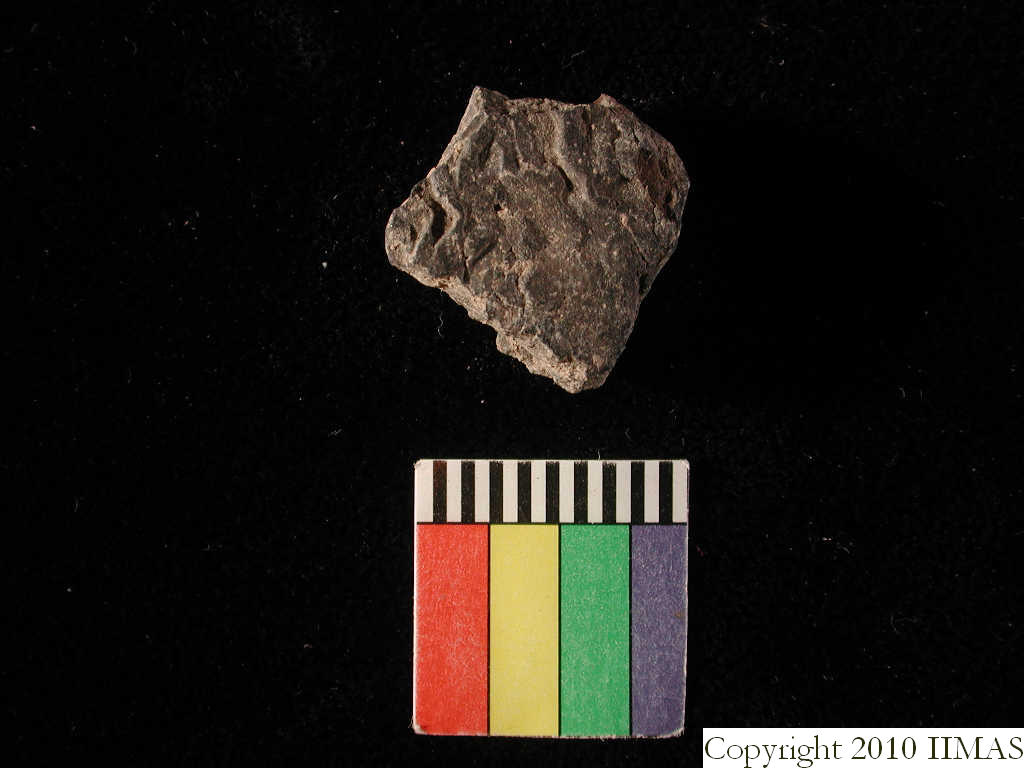 |
 q34.1 q34.1 |
|
q44.3 is very bad preserved and the figures are unclear. The seal impression was found during the cleaning of Unit C2, so we have no context of the object.
|
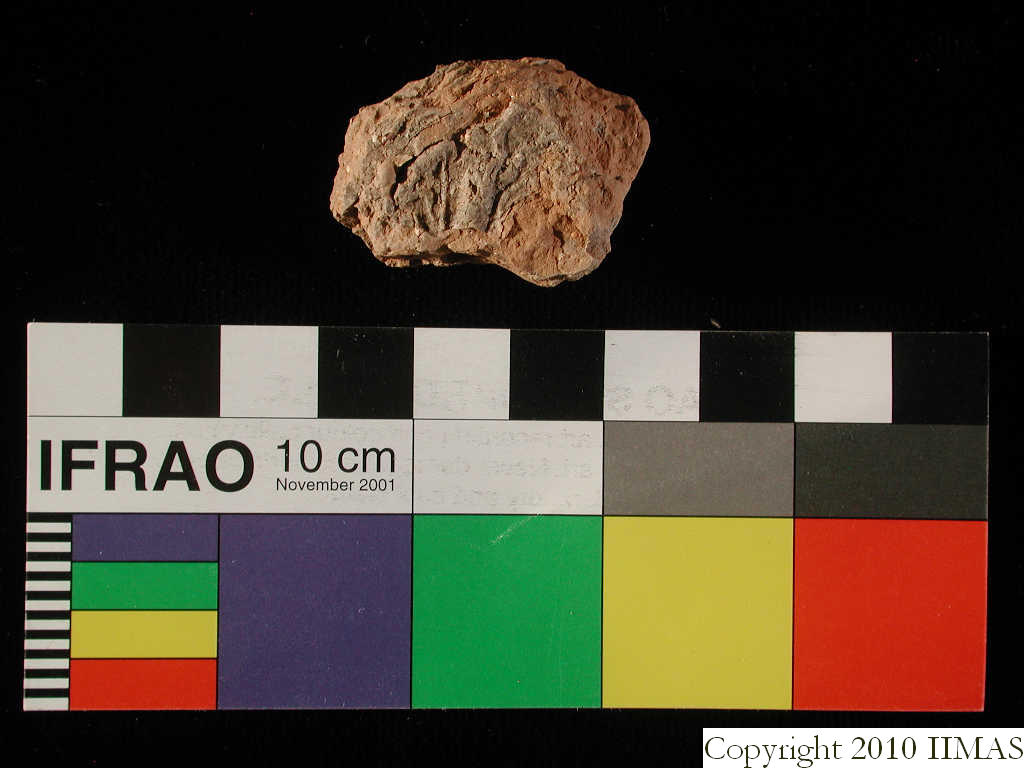 q44.3 q44.3 |
|
the figures on q231.2 are probably animals and a human facing right. The context of the object is a fill f142 of the Mittani pit f122.
|  q231.2 q231.2 |
|
A figure facing right is visible on q39.5. The seal impression was found without context while cleaning Unit C2, where are EDIII structures.
| 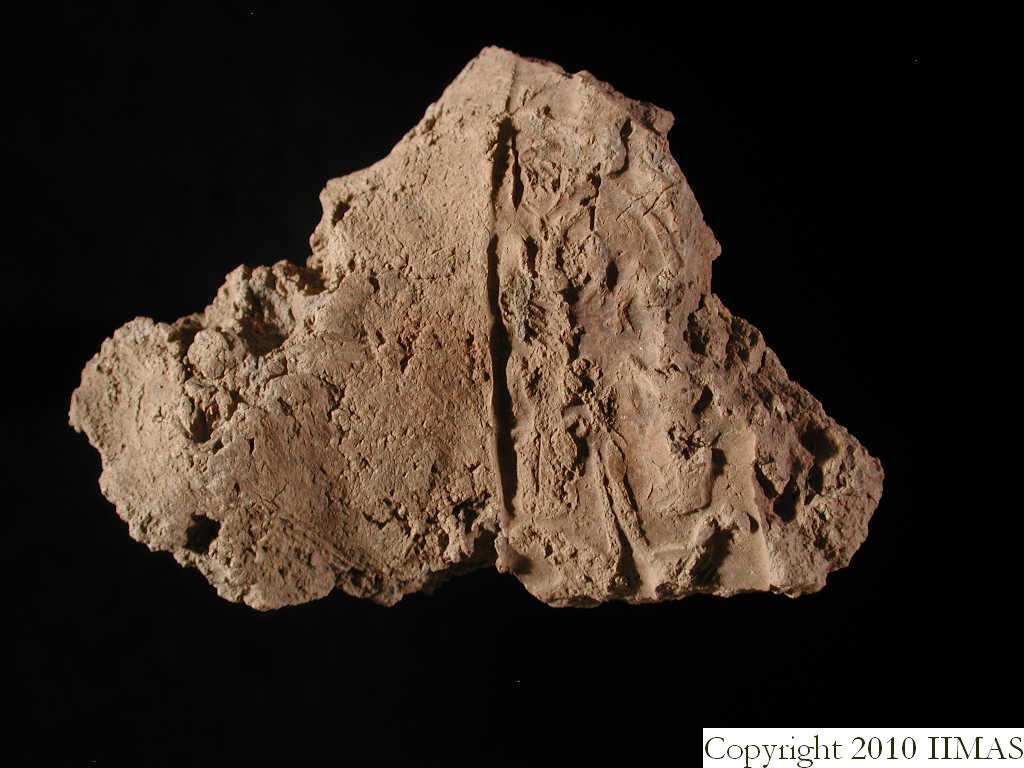 q39.5 q39.5 |
Back to top: Glyptics